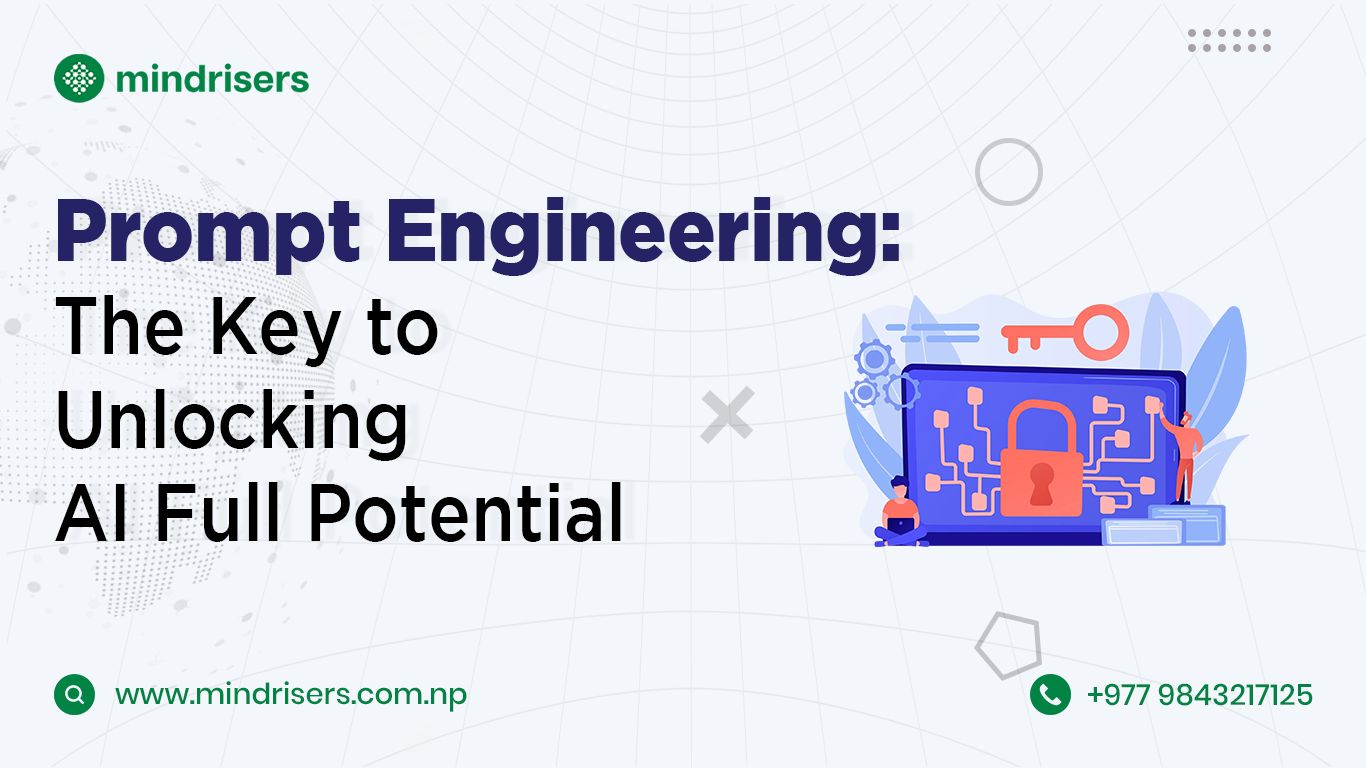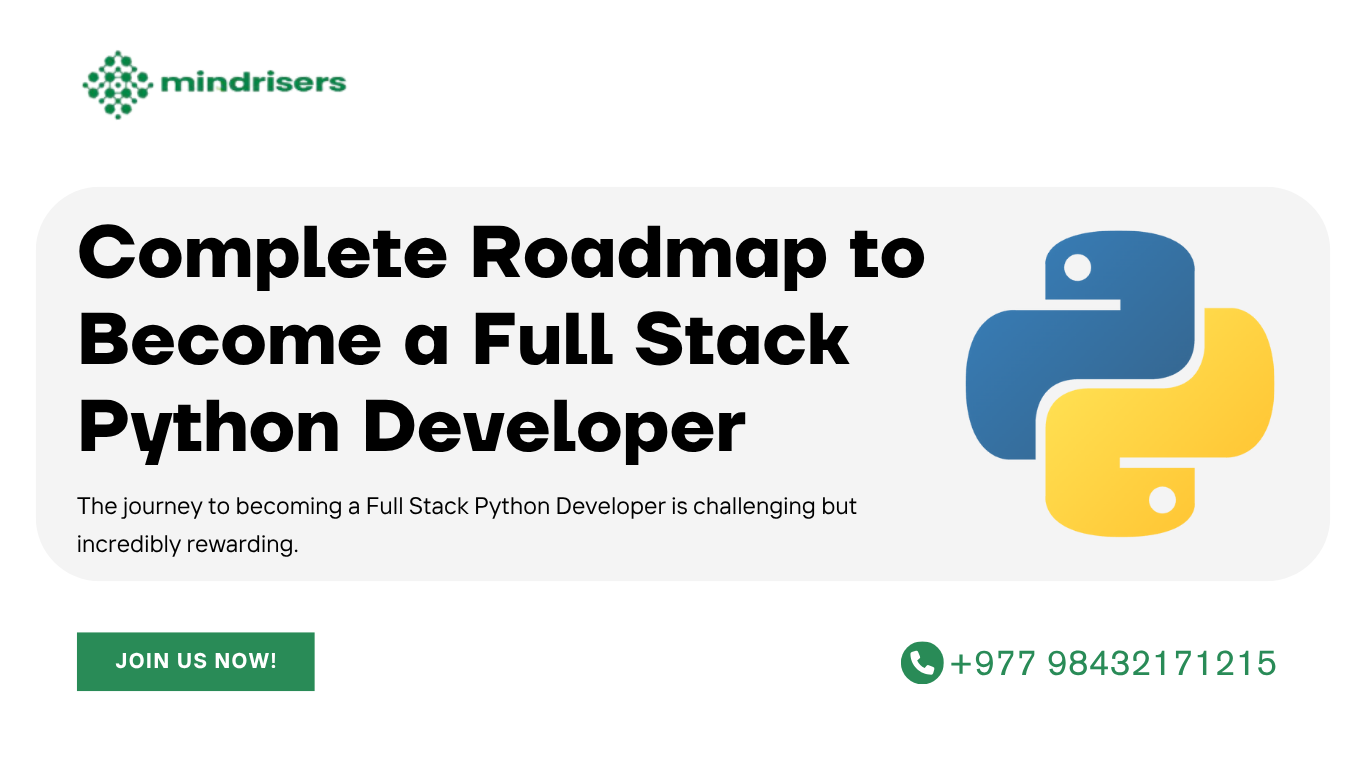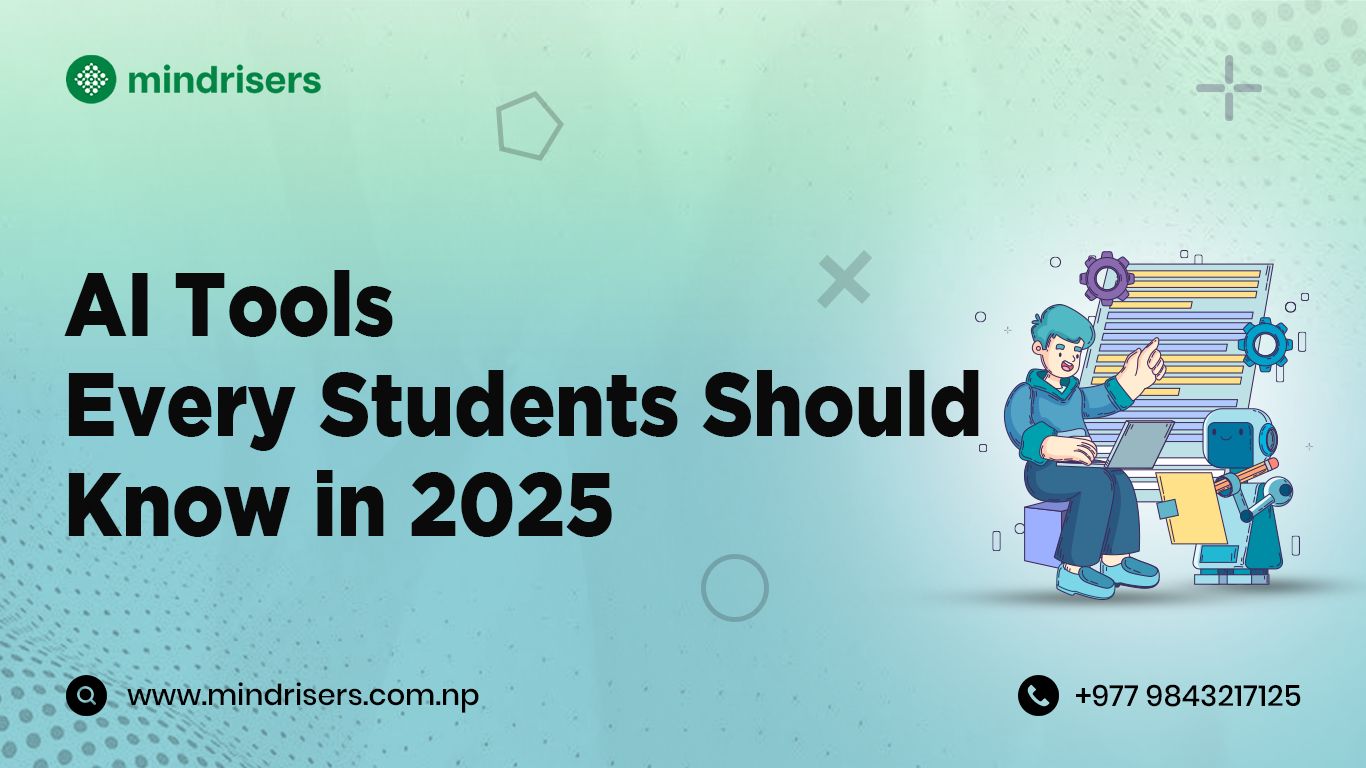
Rupesh Basnet - Author
2025-08-03
In today's fast-paced world of artificial intelligence, Prompt Engineering has quickly become a crucial skill for truly getting the most out of AI. It's the art and science of writing clear, precise instructions we call prompts, to guide AI systems like large language models (LLMs).
This helps them generate exactly the kind of accurate, relevant, and creative output you're looking for. Without good AI prompt engineering, even the most advanced AI can just give you generic or unhelpful answers. So, if you're looking to unlock the full potential of AI for everything from writing content to analyzing data or solving complex problems, mastering this discipline is essential.
You control the AI: Learn to precisely tell AI what you need.
Improve precision of AI: Receive accurate, to-the-point responses consistently.
Harness AI innovation: Ask AI to generate genuinely innovative content.
What is Prompt Engineering and Why It Matters
Have you ever used ChatGPT, Midjourney, or any AI tool, and it didn't get what you were trying to say? That is precisely where Prompt Engineering enters the picture.
Prompt Engineering in the simplest form is the art of writing concise and intelligent instructions (prompts) to AI, so you know exactly what you're looking for. It's not coding or hard tech, but the way you talk to the AI so that you can receive enhanced, more relevant, and creative answers.
The most advanced AI will not deliver without an adequate prompt. You could have a highly effective tool before you but if you do not know how to effectively ask for it, then you would not be able to reap its full potential.
Here's why prompt engineering is important:
Better output: Well-designed prompts (quality AI output)
Saves time: No necessity to continually reword or paraphrase answers.
Boosts creativity: Helps you generate new ideas, faster.
Widely useful: From content writing and coding to designing, marketing, and research, it can be applied to every sector.
Future-proof skill: As AI tools are gaining traction, prompt engineering will be one of the best digital skills that can be helpful and future-proof.
The Vast Scope of Prompt Engineering in Contemporary AI
Prompt Engineering is far more than a formality; it's a profession that has quickly become essential, powering the true potential of AI in nearly every sphere of our contemporary world. It's the advanced art of translating intricate human intention into exact, actionable input that AI models, and especially large language models (LLMs), can indeed process and implement.
This mastery of AI prompt engineering is the distinguishing factor between general AI output and extremely targeted, worthwhile, and even revolutionary output. Its growing demand for practitioners with practical prompt engineer training attests to its revolutionary influence and pushes AI beyond automation into the realms of actual intelligence and problem-solving.
Some key areas where the expertise of Prompt Engineering is considerably felt:
Bringing Content Creation & Marketing to the Next Level: From writing mere text, prompt engineers are making it possible for AI to create on-brand, extremely engaging marketing copy, detailed articles, social media posts, and even whole creative stories. This entails defining tone, style, audience, and key message, transforming raw AI potential into a quality- and consistency-driven content factory.
- Transforming Data Analysis & Insights:
Prompt Engineering allows users to interact with intricate data sets using natural language, extracting nuanced insights that would otherwise require specialist data science expertise.
Whether it's identifying trends in minute data patterns and forecasting financial outcomes or summarizing extensive research documents and pinpointing crucial anomalies, precise prompts allow AI to function as a sophisticated analytical assistant, accelerating decision-making and revealing hidden opportunities.
- Improve Customer Experience & Service:
AI chatbots and virtual assistants are only as good as the quality of their underlying prompts. Prompt Engineering enables such systems to comprehend sophisticated customer queries, offer precise and empathetic answers, offer personalized assistance, and even manage multi-turn discussions flawlessly, resulting in dramatically improved customer satisfaction and business efficiency.
- Speedier Software Development & IT Operations:
In tech, AI prompt engineering is a game-changer. Developers use it to compose code snippets, debug code, refactor existing code, and even create extensive documentation. It reduces development cycles significantly, does away with repetition, and allows human developers to focus on more strategic architectural and creative problems, improving productivity levels in general.
- Driving Research & Development Innovation:
For researchers, academics, and R&D scientists, Prompt Engineering is a phenomenally potent tool to drive discovery. It can aid in tasks as diverse as hypothesis generation and scenario simulation by synthesizing enormous volumes of scientific literature, distilling critical findings from research papers, and even helping with experiment design. This enables researchers to develop ideas and synthesize information at a velocity never before possible, advancing the frontiers of knowledge.
- Personalizing Education & Training:
Ever dreamed of an AI tutor exactly suited to your learning style? Prompt Engineering is turning this into reality with the potential of AI to create customized learning pathways, adaptive assessments, explain difficult concepts in numerous ways, and even offer focused feedback. This revolutionizes the education sector, making learning more accessible, interactive, and efficient for all types of learners.
The real potential of Prompt Engineering lies in the fact that it can close the gap between human intent and AI action, making AI not just a tool, but a very versatile and smart collaborator in almost any field.
Top Skills You Need to Learn to Become a Prompt Engineer
In the era of AI where intelligence is created by machines, the Prompt Engineers are us who translate between humans and machines. They don't just tell AI what to do; they guide it to think, reason, and reply exactly as needed. But to come that far, curiosity is not enough. You need a good mix of technical and soft skills that allow you to speak the language of AI without difficulty.
Here are the top skills every next-generation Prompt Engineer must be proficient in:
1. Professional Communication Skills
Prompt engineering isn't writing, it's structuring ideas. You must understand how to break down complex requests into clear, step-by-step instructions that can be performed by AI. It's scripting: the more elaborate and explicit you are, the more accurate the AI's performance.
Tip: Try using context, constraints, and tone in your prompts, such as Explain simply or Provide examples in bullet points.
2. Analytical & Critical Thinking
Top prompt engineers do not settle for the initial response; they contrast outcomes, recognize shortcomings, and troubleshoot accordingly. You should question if the AI's response is helpful, complete, unbiased, and aligned with your objective. This needs creativity along with logic.
Real-World Application: In content writing, a bad prompt will generate fluff; a good one can generate SEO-optimized, on-brand messaging.
3. Domain-Specific Knowledge
Prompts that are excellent for a software developer may not be any good at all for healthcare or legal applications. That is where domain expertise, whether in education, law, data analysis, or marketing, is necessary. It allows you to develop context-specific prompts that lead to meaningful outputs.
Example: A prompt for medical writing must be ethical and cautious, while one for social media content must be trend-aware and punchy.
4. Knowledge of AI Models and NLP Behavior
You don't have to create your own LLM, but having a working understanding of how models like ChatGPT, Claude, or Gemini process prompts is enlightening. Know:
- What is a token?
- How is temperature related to randomness?
- Why is context length important?
Playgrounds such as OpenAI Playground or Hugging Face Spaces allow you to experiment and learn about prompt behaviors.
5. Iteration & Refinement Mindset
Prompting is iterative. Your initial prompt will seldom be ideal, and that's alright. A proficient prompt engineer is tenacious, tries several iterations, learns from failure, and takes note of what is effective.
Pro tip: Maintain an active journal or use prompt-tracking software (e.g., PromptLayer) to experiment with versions and track results.
6. Prompt Framework Knowledge
As the discipline has matured, formal methods like the following are becoming the norm:
Few-shot prompting give the AI a couple of examples
Chain-of-thought prompting (encouraging step-by-step thinking)
Role-based prompting e.g. Respond as a senior developer.
7. Prompt Tool & Automation Platform Experience
LangChain, Flowise, Zapier with AI, and OpenAI API are some of the technologies that give prompt engineers the power to automate processes or build prompt-based applications. Knowing how to connect prompts with technology adds value in real-world scenarios.
Bonus: Soft Skills That Make a Big Difference
- Patience and Curiosity, prompting is a continuous learning process
- Teamwork, particularly when dealing with developers, designers or content teams
- Problem-Solving, particularly for boundary situations or complicated instructions
It's not about memorizing commands, it's about learning to think. You're not only instructing the AI to do something, you're teaching it to reason, to react, to create. And that's something that will always be needed for years to come.
Top 4 Most Common Mistakes in Prompting and How to Correct Your Mistakes
Maximizing AI's utilization begins with developing the correct prompt. The majority of users, however, commit the same errors that hinder AI from achieving its full capability. The following are the four most common mistakes individuals make when prompting AI and how to correct them for improved outcomes.
1. Too General or Vague
The Mistake:
Providing open-ended prompts such as "Tell me about AI" or "Describe technology" without indicating what you need. These prompts yield general, unfocused, or surface-level responses.
How to Fix It:
Be specific and goal-directed with your prompts. For instance:
"Describe the use of AI in medicine with three examples from real life."
This direct instruction tells AI to generate complete, relevant content instead of a general outline.
2. Overloading Prompts with Multiple Tasks
The Mistake
Asking AI to perform several tasks simultaneously, such as "Write a blog post, develop a title, and come up with keywords all in a single request." This typically results in average or half-completed responses since the AI lacks task prioritization skills.
How to Fix It:
Split your request into specific, discrete tasks. Begin with "Write a 500-word blog post on AI in education," then issue a separate request for a good title, followed by keywords. This allows AI to focus on one task at a time, which enhances quality.
3. Lack of Sufficient Context
The Mistake:
Providing prompts that presuppose AI recalls previous conversations or text, i.e., "Continue with this article" without providing the original article. AI models are not offered continuous memory unless context is given.
How to Fix It:
Always provide required background information or quotes from the text. For example:
Following is the intro paragraph: [paste text]. Can you please finish the section on AI benefits in education?
Context helps AI to produce senseful and pertinent continuations.
4. Disregarding Role and Tone Directions
The Mistake:
Requesting general questions with no mention of tone or style, e.g., "What is prompt engineering?" The response might be factual yet uninteresting or unsuitable for your audience.
How to Fix It:
Provide role or tone instructions to receive customized responses, e.g.:
Teach prompt engineering to a novice, or write a blog about prompt engineering for marketers in a conversational manner.
This allows the AI to match your intended depth and tone.
Conclusion:
Prompt engineering isn't a technical hack, but it is a communication skill that allows you to maximize AI tools such as ChatGPT, Claude, or Gemini. As we've seen, most frequent errors are the result of careless, loaded, or confusing prompts. The good news is that all of these are simple to correct as soon as you master the proper technique.
By emphasizing clarity, context, structure, and iterative phases, you are able to convert excellent prompts into effective instructions that generate precisely what you require, be it content creation, data analysis, automating processes, or developing AI-powered applications.
So if you're really committed to taking your work with AI to the next level, steer clear of these traps and begin designing your prompt, a subtle change with enormous influence on productivity and creativity.
FAQs
-
Do I need to know coding to be a prompt engineer?
The basic idea of Prompt engineering is less programming and more communication, critical thinking, and learning to build good instructions.
-
What is the most common error that beginners make in questioning?
The most common mistake is being too general. If your question is not clear, the AI does not know exactly what you want, and this leads to generic results.
-
Is prompt engineering applicable in non-technical areas?
Yes. Prompt engineering finds application in marketing, education, business, content creation, HR, and even in customer service. Anywhere AI is being applied, prompting is relevant.
-
How can I test that my prompt is working?
Experiment with various versions of your prompt and observe the outcomes. The ideal prompts give outputs that are accurate, brief, and to the point in terms of what you intended. Don't hesitate to edit and re-do.
-
Why is context important when asking AI?
AI doesn't recall what you were previously doing to keep the context within a conversation. You'll need to provide any background context necessary in your prompt so it can produce accurate or relevant responses.
Recent Post
View All
Generative Engine Optimization (GEO) in 2025 and beyond: A Complete Beginner-Friendly Guide
2025-12-02.561 Views
Complete Roadmap to Become a Full Stack Python Developer
2025-10-14.920 Views
How Local Businesses in Nepal Can Use WhatsApp Marketing Effectively
2025-08-18.1549 Views
AI Tools Every Students Should Know in 2025
2025-08-18.1513 Views
Never miss an Opportunity !
Want to learn TOP 2025 IT Skills ?
We open IT skill classes Monthly in Design, Development, Deployment, Data etc.
Have something to Ask ?
get admission enquiry